Anti-aircraft and blinding. Projects of naval combat lasers for the US Navy
In recent years, the US naval forces have shown great interest in promising laser arms, suitable for installation on warships. Several samples of this kind have already been developed and tested, and new products should appear in the future. With the help of combat lasers, the Navy is going to fight surface targets, as well as carry out anti-aircraft and anti-missile defense.
Notable successes
Since 2010, the Kratos Defense & Security Solutions company, commissioned by the Navy, has been developing a Laser Weapon System (LaWS) laser combat complex. Its main element was an infrared solid-state laser with a power of 30 kW, capable of hitting optoelectronic systems and destroying structural elements of surface or air objects. It was noted that the complex, for all its complexity, is extremely cheap to operate. One laser "shot" cost less than 60 cents.
In 2012, testing of the AN / SEQ-3 LaWS product began in the conditions of a ground test site, which confirmed the calculated characteristics. In 2014, the complex was installed on the USS Ponce (AFSB (I) -15) landing ship for tests at sea. In the future, the prototype has repeatedly demonstrated its capabilities to combat various targets.
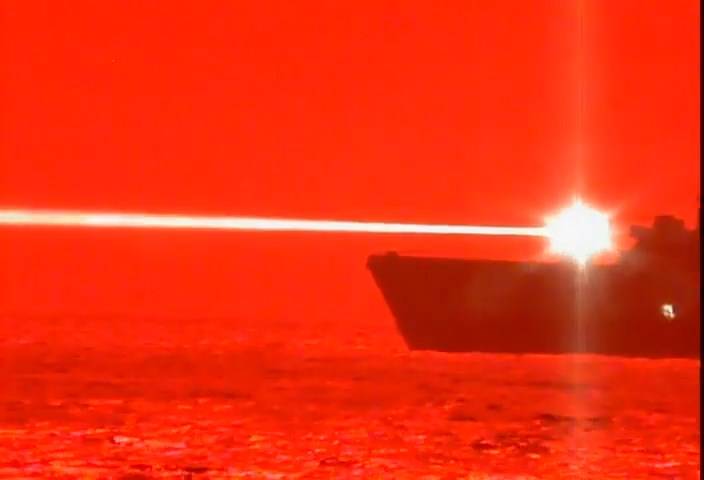
USS Portland uses LWSD laser, May 2020 Photo by US Navy
Tests on the USS Ponce continued until 2017, when this ship was withdrawn from the fleet... The LaWS product was transferred to another carrier, the landing ship USS Portland (LPD-27) became it. Also, soon there was an order for the second and third complexes with delivery in 2020. One was planned to be installed on a land range, and the second was intended for the USS Arleigh Burke (DDG-51) destroyer.
In the future, it was planned to develop the LaWS project in order to increase the laser power. These plans were successfully completed as part of the Laser Weapon System Demonstrator (LWSD) project. In the recent past, an experimental LWSD Mk 2 Mod 0 laser system was installed on the USS Portland for testing. The calculated power of the solid-state IR laser has reached 150 kW.
On May 16, 2020, the LWSD was successfully tested on the high seas. The laser complex successfully detected and escorted an unmanned target, after which it “fired a shot”. The high power of the laser made it possible to burn through the body of the target in a minimal time and disable it. This confirmed the high performance of the solid-state combat laser.
Non-lethal agent
The first samples of laser weapons for the US Navy were intended to destroy targets by causing structural damage. Recently, work has begun in the "non-lethal" direction. The new combat laser, with limited power, will not be able to destroy the target. At the same time, he must suppress the enemy's optical means - ship, aviation or mounted on guided weapons.
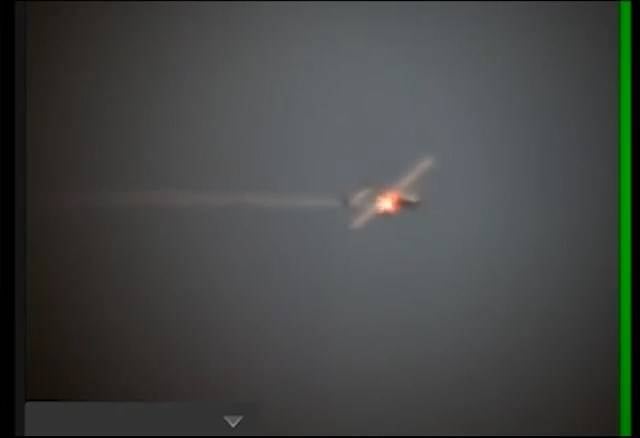
An unmanned target hit by the LWSD complex. Photo by US Navy
The first project of this kind was designated Optical Dazzling Interdictor, Navy (ODIN). It was developed by the Dahlgren Division of the Naval Surface Warfare Center (NSWC) and has now been put into testing. The first experimental laser was installed on the USS Dewey (DDG-105) destroyer in 2019.By the end of the year, a second carrier was expected to be tested, and in 2020 it was planned to deploy six more complexes.
According to various sources, tests of the ODIN product have already begun, but the Navy is in no hurry to disclose their details. In addition, the exact tactical and technical characteristics of the complex remain unknown. In the coming years, the fleet plans to conduct full-scale tests and pilot operation, the results of which will make final conclusions about the prospects and the need for limited-power lasers.
Universal novelty
Several projects of shipborne laser weapons are now in their early stages and will reach testing only in the future. The most famous project at the moment is the High Energy Laser with Integrated Optical-dazzler and Surveillance (HELIOS) project from Lockheed Martin. It offers a comprehensive solution to the problem of air defense and missile defense, optoelectronic suppression and reconnaissance.
In terms of architecture and design, the HELIOS product should not fundamentally differ from other shipborne lasers. At the same time, a more advantageous combination of components is proposed, which provides a solution to a number of basic problems. A fiber laser with a power of 60 kW or more has been created for the HELIOS complex. It also offers advanced optoelectronic surveillance and digital control system.
The main task of the HELIOS complex will be to protect ships from attacks from the air or from the water. Taking target designation from other ship systems or using its own cameras, the complex will be able to detect dangerous objects, take them for tracking and strike with a high-power beam. A mode of lower power is also provided, at which the laser can suppress the optics, without wasting power on the destruction of structures.
It is proposed to use a more advanced optical system with an increased observation range. The complex should be able to output data to the ship's CIUS. This will make it possible to more fully integrate HELIOS into the ship's systems and expand the range of fully solvable tasks.
According to known data, individual HELIOS components have already been tested. In the near future, the finished complex will be installed on an experimental vessel, which will be one of the Arleigh Burke-class destroyers. The first "shooting" from the carrier can take place as early as 2021.
Development prospects
The idea of creating a laser combat complex for installation on ships received the support of the US Navy and is now being implemented in the form of several promising projects. Ready-made and projected samples of this kind are intended to carry out the defense of ships in the near zone, both by hitting the target, and by suppressing its optical means. In the future, the emergence of new complexes with other capabilities is expected.
In the near future, the Navy, scientific organizations and commercial contractors should complete the development of relevant projects and test ready-made samples. First of all, the LWSD combat laser is of interest to the fleet, which is planned to be brought to series and deployed on ships as soon as possible. Full-scale testing of the newer HELIOS will also begin soon.
All these complexes are considered as an addition to the existing near-field protection systems. Combat lasers with a power of 30 to 150 kW or more will have to work together with artillery and missile systems of various types. This will make the defense of the ship formation more flexible, and also optimize the financial component of its application.
Also, the US Navy pays great attention to the "blinding" ODIN complex. In the near future, almost a dozen ships will receive such equipment, which will be involved in trial operation. Then conclusions will be drawn about the real prospects of such a system. It is possible that the production and installation of lasers on ships will continue.
The concept behind the HELIOS project is of great interest. At the expense of one complex, it is proposed to attack, suppress and conduct surveillance. In addition, it recently became known that both HELIOS and ODIN in the future may be included in the information and control circuits of the ship as full-fledged surveillance, detection and target designation systems.
In the future, the Navy wants to get new laser systems with higher range and power characteristics. So, the possibility of creating a shipborne laser for air defense / missile defense of increased range is being considered. Also, the development of powerful ship-based systems suitable for use in strategic missile defense is not ruled out.
Development continues
In recent decades, the Pentagon has paid great attention to the so-called. directed energy weapons, and this has already led to notable advances in the field of combat lasers. Several new projects of this kind are being developed for the US Navy, and some of them have already been brought to trial operation - with very interesting results.
It should be noted that so far, successes are being demonstrated only in tests, and production is limited to a small series for equipping individual ships. Not a single combat laser has yet been recommended for service and for full-scale rearmament of ships. However, all of this is expected to happen over the next few years. Time will tell whether we will be able to fulfill these plans and meet a reasonable deadline.
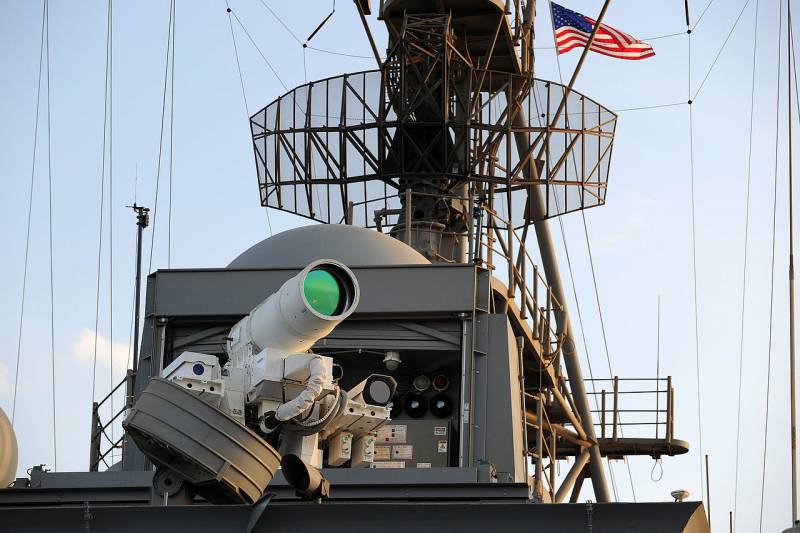
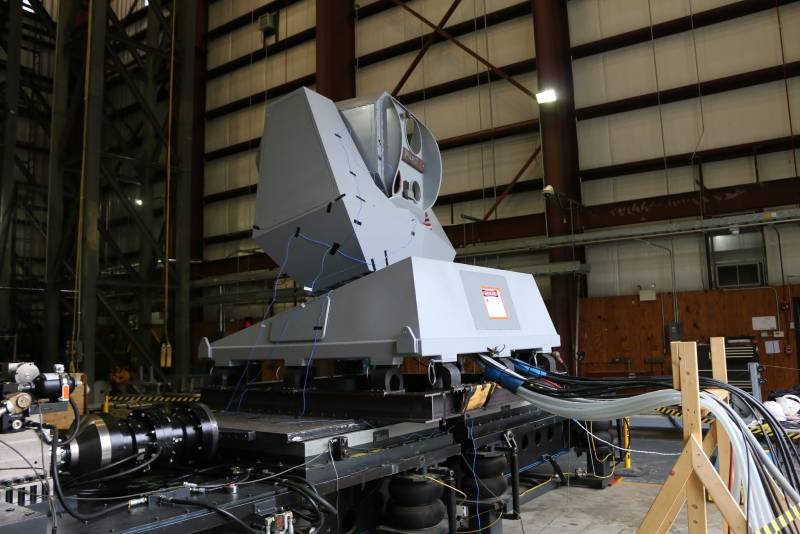
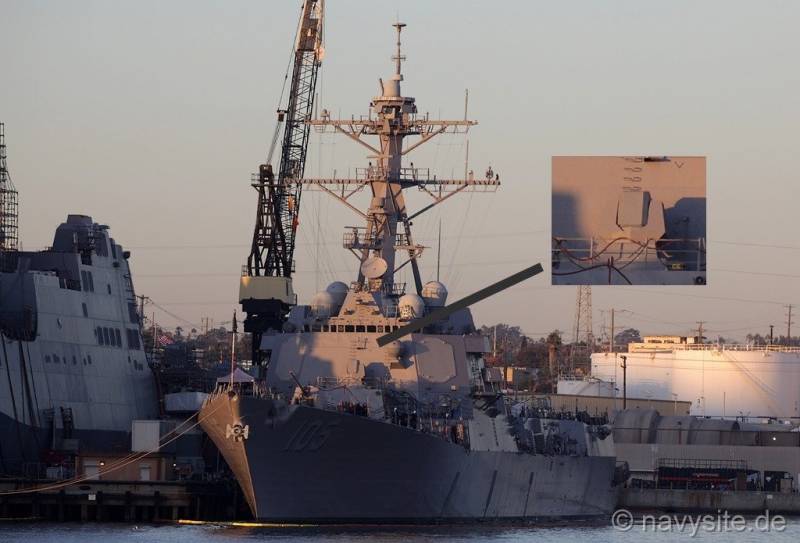
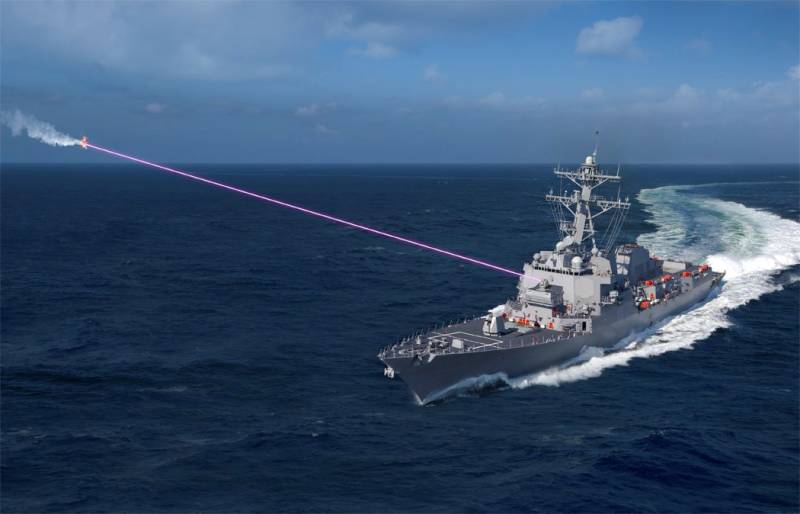
Information